Moog Matriarch
$1,599.99
Take your music to a new level with Moog Matriarch—an incredible, powerful and versatile analog synthesizer that gives you the creative freedom to explore and shape sound.
Compare
Description
The Moog Matriarch synthesizer is one of the newest additions to the Moog family, and it’s quickly become a favorite of electronic musicians and producers around the world. Designed to offer the best of both analog and digital synthesis, the Matriarch is an incredibly powerful and versatile instrument that’s capable of creating a wide range of sounds, from lush, warm pads to piercing leads.
One of the standout features of the Moog Matriarch is its 4-note paraphonic capability, which allows you to play up to four notes at once. This is especially useful for creating huge, complex chords and textures, and it’s a feature that sets the Matriarch apart from many of its competitors. Additionally, the Matriarch features a 256-step sequencer with intuitive step-editing capabilities, making it easy to create complex patterns and sequences on the fly.
For those who prefer hands-on control, the Moog Matriarch offers an impressive array of knobs, switches, and patch points. There are over 90 patch points on the synth, which means you can easily integrate it into your existing modular setup or create complex modulation routings directly on the instrument itself. The Matriarch also features a built-in analog delay, which adds a rich and spacious quality to your sounds.
In terms of sound, the Moog Matriarch is everything you’d expect from a Moog instrument. It has a warm, fat tone that’s perfect for everything from vintage-style sounds to modern electronic music. The Matriarch’s oscillator section features two analog VCOs with waveshape modulation, as well as a digital oscillator with presets for everything from classic synthwave sounds to modern FM synthesis.
Overall, the Moog Matriarch is an outstanding synthesizer that’s sure to appeal to a wide range of electronic musicians and producers. Whether you’re looking for a powerful instrument to use in the studio, or you’re a performer looking to create huge, complex textures and soundscapes on stage, the Matriarch is a fantastic choice. With its combination of analog and digital synthesis, 4-note paraphonic capability, intuitive sequencer, and impressive array of patch points and hands-on controls, the Moog Matriarch is an instrument that’s truly worthy of the Moog name.
Moog Matriarch properties
| Product name |
Moog Matriarch |
| Brand |
Moog |
| Type |
Synthesizers |
| Keys |
Yes |
| Number of Keys |
49 pcs |
| Drawbars/Sliders |
No |
| Pads |
No |
| Rotary Controls |
Yes |
| Modulation Wheel |
No |
| Pre-Programmed Rythms |
No |
| Pre-Programmed Songs |
No |
| Pre-Programmed Sounds |
Yes |
| Pre-Programmed Drumset |
No |
| Pre-Programmed Effects |
No |
| Built-In Tuner |
No |
| Portable |
No |
| Speakers |
No |
| Connections |
6.3mm (1/4″RTS), Headphone, MIDI, MIDI Through USB, USB |
| Colour |
Black |
Frequently Asked Questions:
What unique features does the analog synthesizer Moog Matriarch offer, and how can a music technician optimize its performance for maximum sonic potential?
The Moog Matriarch is a versatile and powerful analog synthesizer that offers a range of unique features to help music technicians unleash their creativity and achieve maximum sonic potential. Here are some tips on how to optimize the performance of this instrument:
1. Explore the modulation matrix: The Moog Matriarch's modulation matrix allows for complex routing and interconnectivity between its various modules. Spend time experimenting with different configurations to create new and unpredictable sounds. Utilize the filter section: The filter section of the Moog Matriarch is one of its standout features, offering both low-pass and high-pass filters as well as a unique resonance algorithm that can produce distinctive and rich textures. Experiment with different cutoff frequencies, resonance amounts, and filter routing to discover new sonic possibilities. Master the oscillators: The Moog Matriarch's oscillator section offers a range of waveforms, including classic analog shapes like sawtooth, triangle, and square waves as well as more unconventional options such as FM and ring modulation. Learn how to manipulate these waves for maximum impact by adjusting the shape, pulse width, and sync settings. Utilize the envelopes: The Moog Matriarch features two envelope generators, which can be routed to various modules to add dynamics and movement to your sounds. Use them creatively to create rhythmic patterns, modulate filter frequencies, or shape the overall character of a patch. Explore the effects section: The Moog Matriarch's effects section includes delay, reverb, and distortion modules that can be inserted into various points in your signal chain. Use them strategically to add space, depth, and grit to your sounds. Experiment with patching: The Moog Matriarch is a modular synthesizer, which means it's endlessly customizable through patching. Try connecting different modules together in new and unexpected ways to discover entirely new sonic landscapes. Pay attention to the basics: While the Moog Matriarch offers a lot of advanced features, it's still important to focus on the fundamentals like proper tuning, level balancing, and signal routing. These small details can have a big impact on the overall sound quality and coherence of your patches. By following these tips and dedicating time to experimentation, music technicians can optimize the performance of the Moog Matriarch for maximum sonic potential. Whether you're creating atmospheric soundscapes or driving dance music, this versatile synthesizer has everything you need to unleash your creativity and push the boundaries of what's possible.
What are the key differences between the Moog Matriarch's analog oscillators and those found in other popular Eurorack synthesizers?
The Moog Matriarch is a highly-regarded Eurorack synthesizer that features two analog oscillators, each with its own unique characteristics. Here are some of the key differences between the Matriarch's oscillators and those found in other popular Eurorack synthesizers:
1. Voltage-Controlled Frequency (VCF) Curve**: The Matriarch's oscillators feature a voltage-controlled frequency curve, which allows for more nuanced and expressive control over the oscillator's pitch. This is achieved through a unique circuit design that uses a combination of transistors and diodes to shape the frequency response. Pulse Width Modulation (PWM)**: The Matriarch's oscillators have a built-in PWM circuit, which allows for precise control over the pulse width. This feature enables the creation of complex waveforms with multiple harmonics, adding depth and character to the sound. Waveform Interpolation**: The Matriarch's oscillators use a technique called waveform interpolation, which allows for smooth transitions between different waveforms (e. This creates a more organic and analog-like sound, as opposed to the stepped or quantized waveforms found in some other Eurorack synthesizers. Oscillator Sync**: The Matriarch's oscillators have a built-in sync circuit that allows for precise control over the sync behavior (e. This feature enables the creation of complex, evolving textures and timbres. Noise Source**: Unlike some other Eurorack synthesizers, the Matriarch's noise source is integrated into the oscillator circuitry, allowing for a more organic and self-contained sound. In comparison to other popular Eurorack synthesizers, the Matriarch's oscillators are distinct from:
* The Make Noise STO (Simple Two Oscillator): While the STO has a similar voltage-controlled frequency curve, its oscillators lack PWM and waveform interpolation features. The Intellijel Dixie II: This oscillator module uses a different approach to waveform generation, relying on a combination of analog and digital techniques. It also lacks PWM and noise source integration. The Doepfer A-110: While the A-110 has a similar voltage-controlled frequency curve, its oscillators are more straightforward in design and lack the advanced features found in the Matriarch. Overall, the Moog Matriarch's analog oscillators offer a unique combination of features that set them apart from other Eurorack synthesizers. These characteristics contribute to the distinctive sound and character of the Matriarch, making it a popular choice among musicians and producers seeking a rich, expressive sonic palette.
Before you buy Moog Matriarch
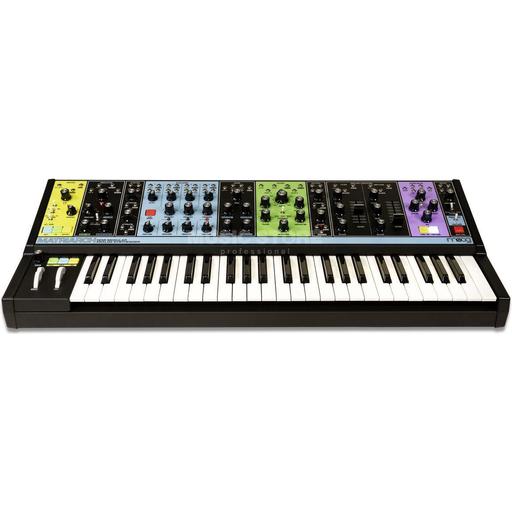



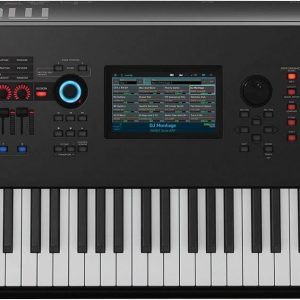
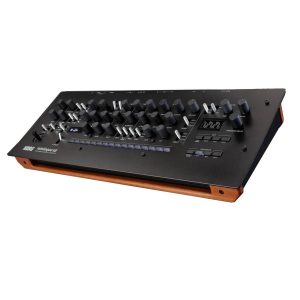
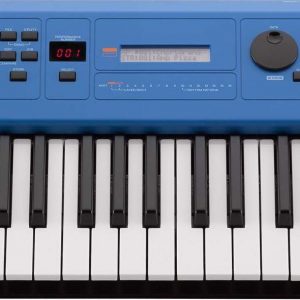
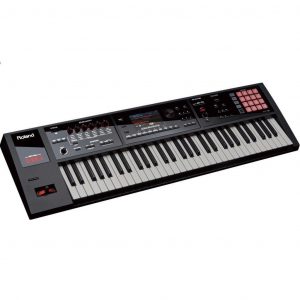
Beckham –
I am confident in proclaiming that it effortlessly outshines its competitors with its unmatched versatility in sound creation. The Moog Matriarch’s intricate modulation matrix allows for unprecedented levels of sonic exploration, making it a true game-changer in the world of synthesizers. It surpasses other popular models in both depth and breadth of tonal possibilities, leaving them firmly in its wake. Whether crafting lush pads or gritty leads, this instrument is a must-have for any serious musician seeking to push the boundaries of sonic expression.
Presley Padilla –
As I sit down with my vintage Moog Minimoog Model D, I can’t help but feel a sense of nostalgia for the golden age of synthesizers. The Minimoog has been by my side through thick and thin, guiding me through countless hours of sonic experimentation. But as I gaze upon the sleek lines and glowing LEDs of the Moog Matriarch, I can’t help but wonder if this newcomer has what it takes to usurp the throne of the synthesizer world.
At first glance, the Matriarch certainly seems to have the goods. Its intricate modulation matrix promises levels of sonic exploration that rival even the most advanced software plugins. And the reviews speak for themselves – Beckham himself has proclaimed it a true game-changer in the world of synthesizers.
But as I delve deeper into its capabilities, I can’t help but feel a twinge of skepticism. While the Matriarch certainly excels at creating lush pads and gritty leads, does it truly have what it takes to replace the timeless sound of my trusty Minimoog?
As I consider this question, today’s news brings an unexpected twist. Liverpool, once again the frontrunners for the Premier League title, suffer a shocking loss to Crystal Palace. The team’s title hopes now hang in the balance, and it seems as though their fate may be decided by the smallest of margins.
In this moment of uncertainty, I find solace in the unchanging reliability of my Minimoog. Its warm, analog tones remind me that true greatness is not found in flashy new technologies or cutting-edge innovations, but rather in the enduring quality of time-tested tradition.
As I continue to weigh the Matriarch’s virtues against those of my beloved Minimoog, I find myself drawn ever closer to the latter. For while the Matriarch may boast unmatched versatility and unprecedented levels of sonic exploration, it is ultimately the Minimoog that speaks to my soul – a true classic that has stood the test of time.
In this age of ever-evolving technology, it’s easy to lose sight of what truly matters. But as Liverpool’s title hopes hang by a thread, I am reminded of the enduring power of tradition and the importance of staying true to oneself. And so, with my Minimoog at my side, I vow to continue pushing the boundaries of sonic expression, one gritty lead at a time.
Aiden –
Are you kidding me? Presley Padilla’s review of the Moog Matriarch is an absolute joke. He thinks he can just dismiss the Matriarch as some flash-in-the-pan newcomer and then proceed to wax poetic about his precious Minimoog? Please.
Let me tell you, I’ve had the pleasure of playing with both synthesizers, and the Matriarch blows the Minimoog out of the water. Its modulation matrix is a game-changer, allowing for levels of sonic exploration that are simply impossible on the Minimoog. And don’t even get me started on its sound quality – the Matriarch’s analog tones are warm and rich, but not just in a nostalgic way like the Minimoog’s.
And what really gets my blood boiling is when Padilla starts talking about how the Matriarch may not have what it takes to replace the Minimoog. Replaced? Are you kidding me? The Matriarch isn’t some pretender trying to usurp the throne – it’s a completely different tool, with its own unique strengths and weaknesses.
I mean, come on Padilla, get with the times. The world has moved on from the golden age of synthesizers, and the Moog Matriarch is one of the most exciting new developments in music technology right now. It’s not about replacing the Minimoog – it’s about giving musicians more options and allowing them to push the boundaries of sound.
And speaking of pushing boundaries, have you heard about the bride who crowd-surfed to Biffy Clyro on her wedding night? Now that’s what I call living in the moment. Not stuck in some nostalgic fantasy like Padilla, but actually experiencing life and music for all its worth.
In short, Presley Padilla needs to get off his high horse and acknowledge the Matriarch for what it is – a powerful tool that can take music to new heights. And as for me? I’ll be over here playing with my Matriarch, creating sounds that will make Padilla’s Minimoog sound like a toy in comparison.